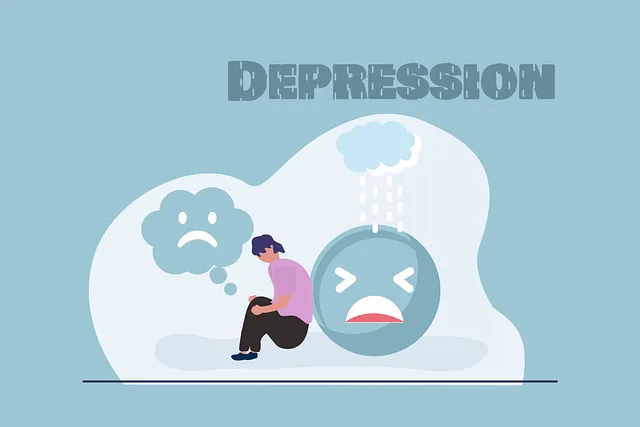Evaluating Castle Rock Kaiser mental health programs combines qualitative and quantitative methods. This approach tracks symptom changes, mental health status, cultural sensitivity, and daily life impact. Integrating participant feedback and data-driven analysis ensures tailored support, informs enhancements, and promotes evidence-based initiatives for the community's overall mental wellness.
Mental wellness program evaluations are vital for understanding and enhancing initiatives like those offered by Castle Rock Kaiser mental health programs. This comprehensive guide explores diverse evaluation methods, from assessing program impact through metrics and qualitative participant feedback to quantitative data analysis and mixed-methods approaches. By examining these techniques, we gain valuable insights into the effectiveness of mental health interventions, informing continuous improvement strategies for optimal patient care within Castle Rock Kaiser’s programs.
- Assessing Program Impact: Metrics and Methods
- Qualitative Feedback: Voices of Participants
- Quantitative Analysis: Numbers Tell a Story
- Mixed Methods: A Holistic Evaluation Approach
- Continuous Improvement: Iterating for Success at Castle Rock Kaiser Mental Health Programs
Assessing Program Impact: Metrics and Methods

Evaluating the impact of mental wellness programs is paramount to understanding their effectiveness and making informed improvements. Organizations like Castle Rock Kaiser utilize various metrics and methods to assess the success of their initiatives, ensuring that resources are allocated efficiently and that services meet the unique needs of the community.
One key aspect is measuring changes in emotional well-being using standardized tools and surveys. These assessments can track improvements in symptoms, coping mechanisms, and overall mental health status before and after program participation. Additionally, qualitative feedback from participants through focus groups or interviews provides valuable insights into their experiences, including the program’s cultural sensitivity and the impact on their daily lives. Integrating these qualitative and quantitative approaches allows for a comprehensive understanding of the Castle Rock Kaiser mental health programs’ reach and benefits, guiding future enhancements and ensuring tailored support for the community.
Qualitative Feedback: Voices of Participants

The evaluation of mental wellness programs often involves gathering qualitative feedback from participants to gain deeper insights into their experiences. At Castle Rock Kaiser, this approach has been instrumental in understanding the impact of their various mental health initiatives. By encouraging open dialogue and active listening, participants are able to share their unique perspectives on the program’s effectiveness, including specific aspects such as empathy building strategies and mental wellness journaling exercises. This qualitative data provides valuable context, revealing not just what participants did or didn’t like but why.
Through these candid conversations, individuals highlight how certain activities helped them manage stress, offering guidance that can be refined and scaled for future programs. The stress management techniques mentioned by the participants provide a roadmap for enhancing the overall mental wellness experience. By incorporating their voices into the evaluation process, Castle Rock Kaiser’s mental health programs become more tailored and responsive to the diverse needs of those they serve.
Quantitative Analysis: Numbers Tell a Story

Quantitative analysis plays a pivotal role in evaluating Castle Rock Kaiser mental health programs’ effectiveness. By collecting and analyzing numerical data, researchers and practitioners can gain valuable insights into program impact. Metrics such as participant demographics, treatment outcomes, and satisfaction levels are crucial indicators of success. For instance, tracking the number of individuals who complete a crisis intervention guidance program and measuring their subsequent mental health status through standardized assessments provides concrete evidence of the program’s reach and efficacy.
This data-driven approach allows for a comprehensive Mental Health Policy Analysis and Advocacy, enabling stakeholders to make informed decisions. By identifying trends and patterns within the numbers, it becomes possible to refine programs, allocate resources optimally, and ultimately enhance service delivery. The process ensures that initiatives like Mental Health Awareness campaigns are not just well-intentioned efforts but evidence-based strategies that contribute to the overall mental wellness of the community.
Mixed Methods: A Holistic Evaluation Approach

In evaluating mental wellness programs, such as those offered by Castle Rock Kaiser, a mixed methods approach provides a comprehensive and nuanced understanding. This strategy combines both qualitative and quantitative data to gain a holistic view of program effectiveness. By examining various aspects like participant satisfaction, clinical outcomes, and organizational processes, researchers can uncover intricate relationships within the program’s ecosystem. For instance, surveys and interviews can shed light on individuals’ experiences with burnout prevention techniques, while statistical analyses can track changes in mental health metrics over time.
Adopting a mixed methods design is particularly valuable for mental health policy analysis and advocacy efforts. It allows stakeholders to assess not only the immediate impact of programs but also their long-term sustainability and reach. This information is pivotal for shaping evidence-based Mental Health Awareness initiatives, ensuring that resources are allocated efficiently and programs are tailored to meet the diverse needs of participants.
Continuous Improvement: Iterating for Success at Castle Rock Kaiser Mental Health Programs

At Castle Rock Kaiser mental health programs, continuous improvement is a cornerstone of their success. By adopting an iterative approach, they ensure that their services remain relevant and effective in addressing a wide range of mental wellness issues. This involves regularly evaluating program outcomes, gathering feedback from participants, and incorporating best practices from both within the organization and external research. Through this dynamic process, Castle Rock Kaiser can adapt their programs to better serve their community.
For instance, they may implement initiatives focused on depression prevention by integrating self-care routine development for better mental health into existing therapy sessions. Additionally, teaching conflict resolution techniques has proven beneficial in empowering individuals to manage challenging situations, further enhancing their overall well-being. This continuous improvement methodology not only improves individual outcomes but also fosters a resilient and supportive environment within the Castle Rock Kaiser mental health programs.
Evaluating mental wellness programs is a multifaceted process, encompassing both qualitative and quantitative methods. By assessing impact through diverse metrics, gathering qualitative feedback from participants, and employing quantitative analysis to uncover trends, organizations like Castle Rock Kaiser Mental Health Programs can gain valuable insights into program effectiveness. Adopting a mixed-methods approach allows for a holistic understanding, while continuous improvement cycles ensure programs remain tailored to the evolving needs of clients. Through these comprehensive evaluation strategies, Castle Rock Kaiser Mental Health Programs strive to optimize support and enhance mental wellness outcomes.






